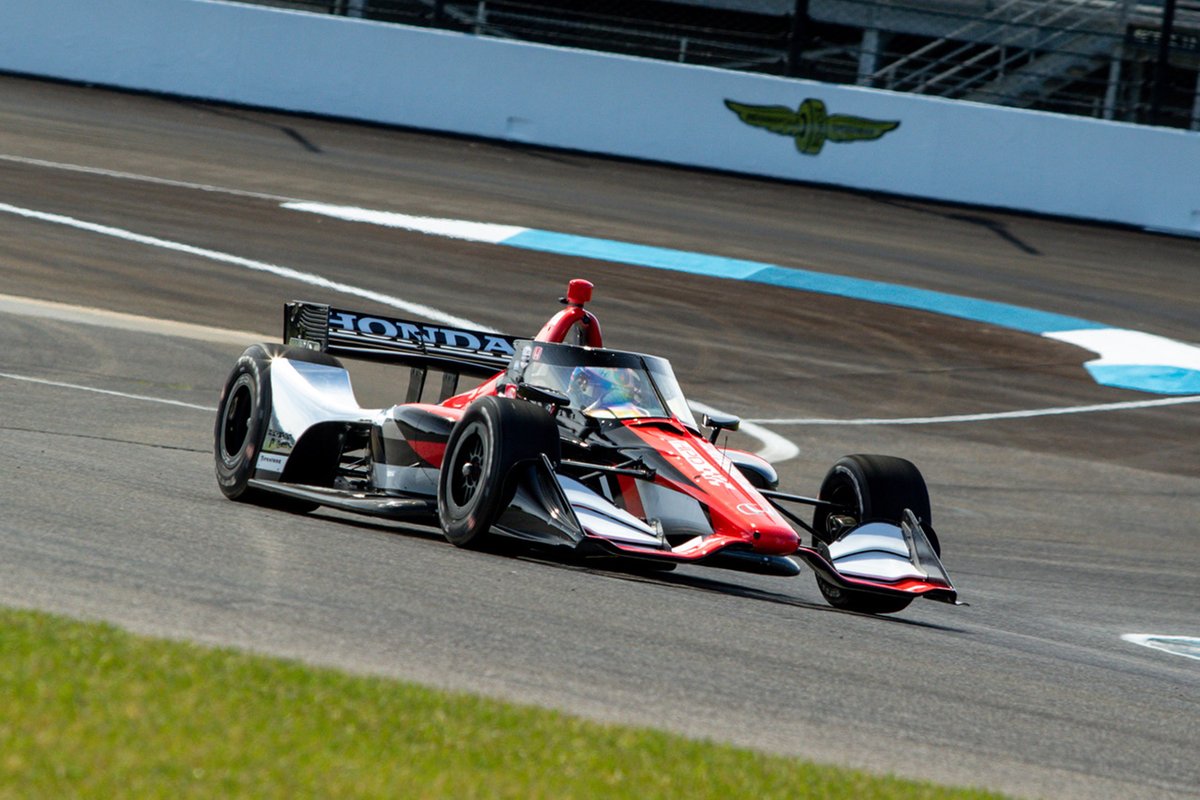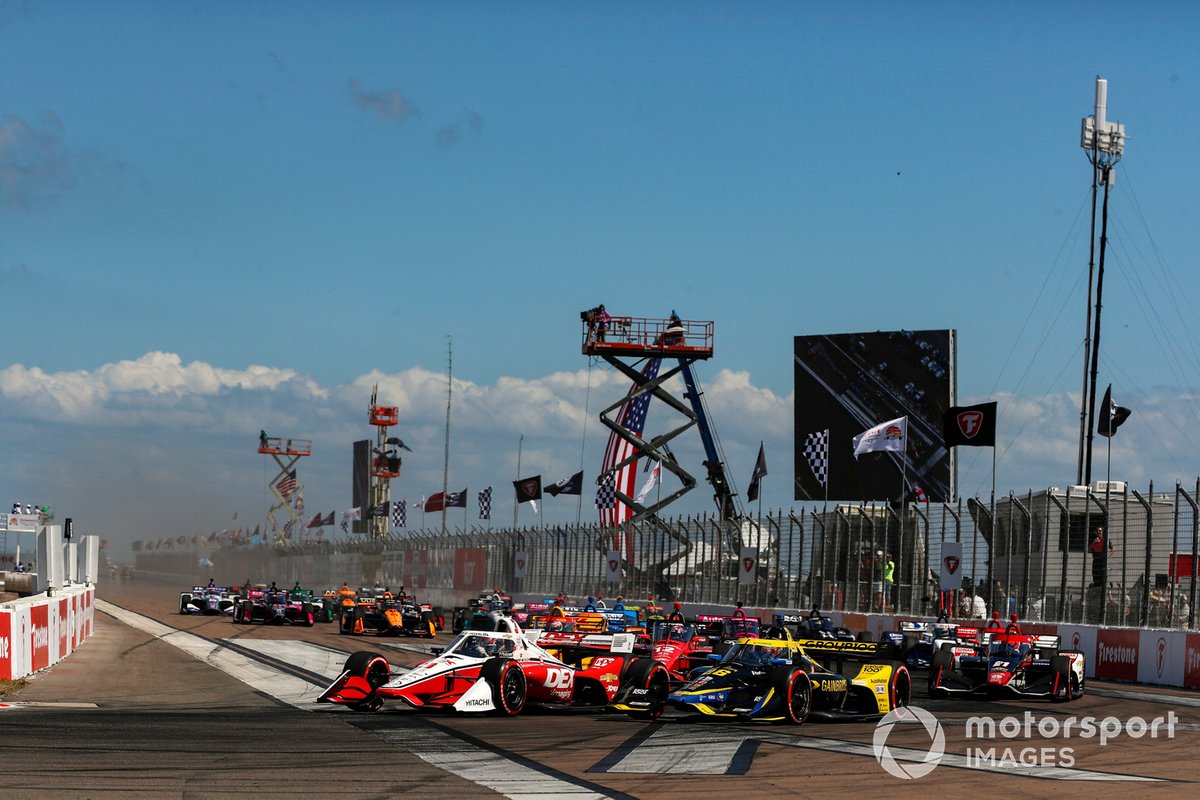
There are so many reasons to be enthusiastic about the 2023 IndyCar season, and we have outlined the potential storylines of excitement and intrigue here. But there is another reason why IndyCar and its followers need this year to be thoroughly absorbing; it may help distract from the series fumbling and bumbling over the introduction of its next engine formula.
Let’s recap. On the eve of last year’s season-opener at St Petersburg, IndyCar revealed that the 2.4-litre-with-hybrid formula was being pushed back to 2024. Of course we understood that hybrid unit builder Mahle was struggling with global supply chain issues – heck, this had been foretold in many automotive-related industries in 2018-19, and was greatly exacerbated by COVID-related production issues. It seemed a little late in the day for an announcement – just 12 months before the new engines and their hybrid units had been due to make their race debut, but… OK.
On 28 March, just 25 days later, both Honda (in a Chip Ganassi Racing car driven by Scott Dixon) and Chevrolet (in a Team Penske machine shared by Will Power and Josef Newgarden) tested their 2.4-litre cars – minus their hybrid units – on a rarely used configuration of Indianapolis Motor Speedway’s road course. Even without the hybrid’s surfeit of electrical thrust, and with the engines still not optimised, these angry-sounding engines were pushing out over 100bhp more than the current 2.2s.
Then, through the summer, there were “no comment”– or “ask IndyCar about it”– type responses from HPD and Chevy folk when quizzed about the projected first test of their 2.4s with the hybrid component added. It turns out that behind the scenes there were increasingly urgent discussions regarding the fact that the Mahle design was perhaps not fit for purpose in an extreme application – ie racing – and so Chevy and Honda were getting very antsy.
Autosport has it on good authority that in light of this problem, Chevrolet wished to delay the introduction of hybrid units and press ahead with the 2.4-litre engines for 2024, given 1) their power advantage over the 2.2s, and 2) the fact that Chevrolet/Ilmor – and presumably Honda Performance Development – had spent millions of dollars and two years developing these bigger engines.
But HPD, after consultation with Honda Japan, said no. For IndyCar to be relevant to their road cars, increasing the capacity of the internal combustion engines was far less of a priority than introducing hybrid units. Put the 2.4 ICE on ice and let’s work with Chevrolet and an alternative outside supplier to develop a new spec hybrid unit.

On 6 December, IndyCar pushed out a press release talking about Shell’s 100% renewable fuel being introduced in 2023 – highly impressive – and Firestone running guayule-derived rubber, a bio-circular material from the woody desert shrub, for all street course races. Again, very worthy. The third point on the release came across as a “by the way”, but was understandably the main focus for most IndyCar correspondents. The series would be sticking with the proven 2.2-litre engines as it introduced hybrids for 2024, and development of the 2.4s had been “paused”.
One irate engineer told Autosport: “Of course the 2.4s had to be paused: the next 12 months are about making sure we both come up with an alternative hybrid unit that won’t embarrass us at St Pete in March 2024. It’s soooo frustrating.
“I don’t know why it took so long for alarm bells to ring at IndyCar that the hybrid unit we had before just wasn’t going to work. I think if they’d admitted to that sooner, there’s a chance we could have found a solution that didn’t involve backtracking. With more lead time, we may – and I emphasise the ‘may’ because supply chain issues have been very real – have found an alternative hybrid supplier and been able to run the 2.4s next year.”
All we’ll be doing is inching forward with hybrids, 10 years after Formula 1. I can only imagine how we’re being perceived from the outside
Said a senior spokesperson for the other manufacturer: “It’s just sad that we as OEMs and the series as a whole have been forced to fix an issue, instead of generating a totally positive narrative for 2024 of, ‘Here are our new engines, here are the hybrid units’.
“Everyone would have forgiven us for delaying the new formula until 2024 if we’d still have done what we promised – more powerful engines and street car-relevant hybrid power. Instead, all we’ll be doing is inching forward with hybrids, 10 years after Formula 1. I can only imagine how we’re being perceived from the outside.”
When the green flag drops at St Pete, and throughout the year at IndyCar’s wonderfully diverse array of race tracks, the kerfuffle over the series’ next power formula will be subsumed in the excitement generated by the on-track action. IndyCar has produced some of the best motorsport action of the past decade, and Penske’s takeover in 2020 has generated far more hits than misses. There’s a sense of direction, signs of thriving rather than merely surviving.
Insight: Who needs a big year in IndyCar 2023?
But I hope that IndyCar’s perhaps mythical ‘third engine manufacturer’, while doing its due diligence, doesn’t delve too deeply into how the series has handled its move into the next formula. Hope, too, that the folks in Detroit and Tokyo who have been writing the cheques for current OEM participation in IndyCar are of a forgiving nature when it next comes time to commit.








